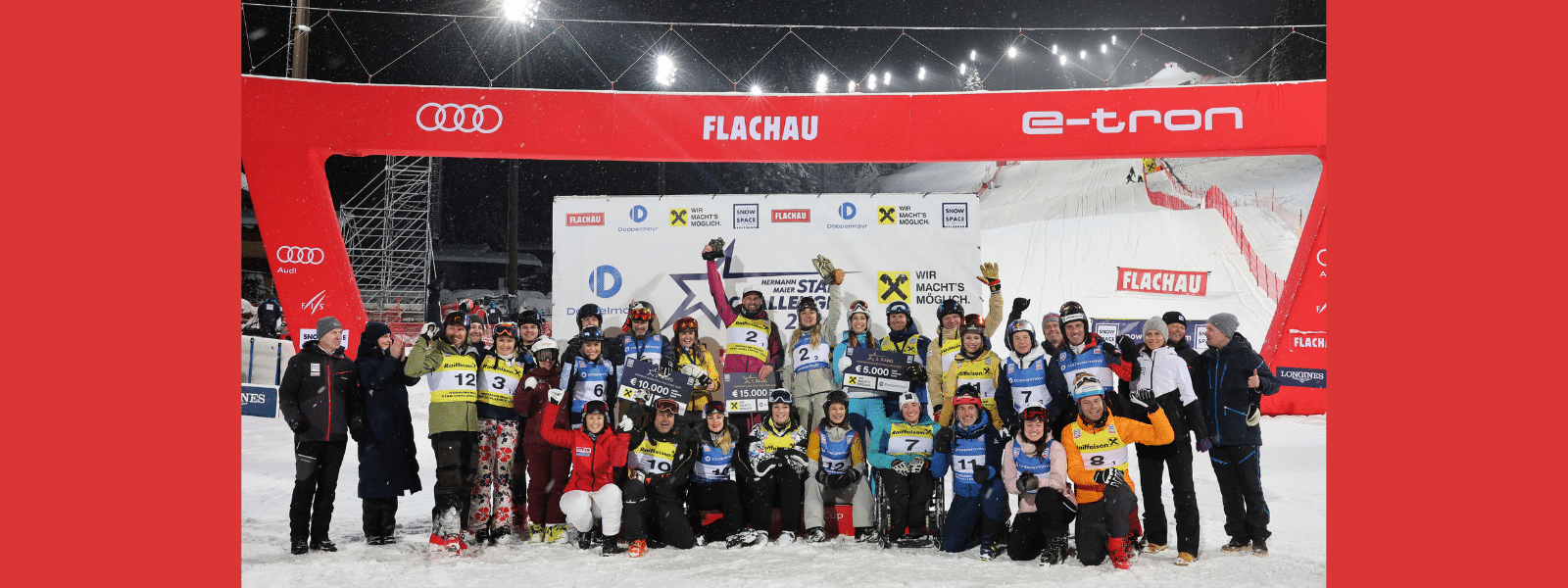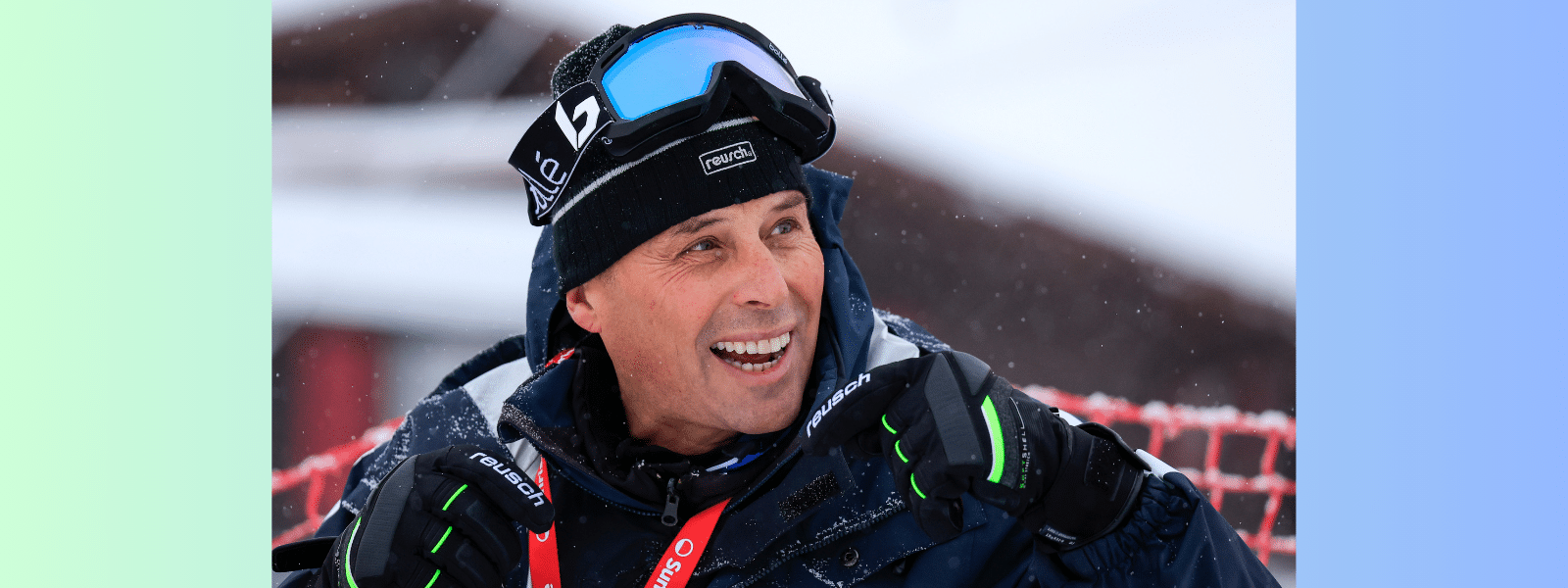Behind The Gold: Dominating Birds of Prey
As downhill racers go, Daron Rahlves was physically small but big in stature – a bold, smart risk taker who loved speed. December 3, 2004 – Rahlves stood atop the Birds of Prey downhill in Beaver Creek. He was running 31st – a late starter. At the bottom, Bode Miller had the lead. ‘D’ tapped his poles, slid his Atomics under the start wand and listened for the telltale beep, beep, beep of the clock. He was off, charging down the elevated start out onto the Flyway. In just under a minute, 40 seconds, he would be part of American ski racing history. But would he repeat the title he won the year before?
In the mid-2000s, Bode Miller and Daron Rahlves ruled the legendary Birds of Prey. Over four straight years, it was either Bode or Daron atop the downhill podium. From 2002 to 2011, they racked up six wins and 13 podiums at the Colorado resort.
The downhill is where ski racing legends are made. The relentless off-camber high speed pitches of the Hahnenkamm where Buddy Werner’s 1959 win put American skiing on the map. The thigh-burning two-and-a-half minutes of the Lauberhorn where Rahlves and Miller won three straight.
Birds of Prey has its own unique character – the flats of the Flyway into the perilous Brink. The sweeping turns through Pump House. The high speed jumps: Harrier into Golden Eagle, through the Abyss and rocketing off Red Tail into the bowels of the stadium with 10,000 screaming fans.
Birds of Prey made its maiden flight in 1997. Just over a year later, it was showcased at the 1999 Worlds where Austrian legend Hermann Maier took double gold and started a string of six straight speed wins.
The 1999 Worlds were bleak for the USA. A turning point came in 2001 when Rahlves crashed the party at the 2001 Worlds in St. Anton, beating the Austrians with super G gold. Soon, Rahlves and Miller starting cracking the code. The next December, Miller shook off a St. Anton knee injury to start a string of World Cup wins – first Val d’Isere, later the night race at Schladming on the eve of the 2002 Olympics and the glacier race at Soelden in October, 2003.
A few weeks later, Miller won a pivotal World Cup in Park City. That win on home snow ignited an unprecedented period of success for the U.S. Ski Team. “Park City was a rallying cry for the team,” recalled coach Phil McNichol. “They were intoxicated by it.”
A week later, an inspired Rahlves got his first Beaver Creek win while Miller lost a battle with his nemesis in the Abyss. “Daron elevated our entire approach to Birds of Prey,” said McNichol. “The flood gates were opened!”
Now, a year later, it was Rahlves versus Miller again. Early-starting Bryan Friedman came down fifth to take the lead. Racer after racer attacked and no one could touch Friedman who celebrated in the leader’s box.
Then, it was Miller time. Starting 17th, he sliced through the course in Bode style. Instead of carving sweeping turns he attacked the gates with a direct line. He soared off Golden Eagle arms outstretched. He crushed his demons in the Abyss, vaulting off Red Tail to the delight of the fans in 1:39.76 – just off Rahlves’ record set a year earlier.
America stood 1-2 once again with Rahlves still to come.
Out of the start Rahlves knew that the Flyway was critical for him. He didn’t have the large body mass that equated to speed on the flat. He had to be precise.
He stayed flat on his skis as he approached the Brink – a perilous drop that puts fear into any racer. He dropped into the steep, setting an edge on the icy pitch. A right-footed turn would set him up for the exit – sweeping through Pete’s Arena into the Talon Turn and down through Pump House.
Heading into the jumps he was flying – downhill ski racing perfection! He soared off Red Tail with precision, entering the stadium to the most thunderous roar he had ever heard.
It was a perfect run for Rahlves who saw the crowd’s celebration, pumped his fist in the air and grabbed an American flag from the crowd. But it wasn’t quite perfect enough – 0.16 behind Miller. He was second.
Miller ran out to meet him celebrating with hugs and tears. “We’ve been trying to do this for a long time,” said Rahlves.
Bode and Daron were two separate individuals with completely different lifestyles, but they came together as ski racers, supporting each other on the hill.
“We both do our own thing but when we’re racing we each want to win,” said Miller. “To be one-two on home turf, it’s just awesome.”
Rahlves and Miller would define a generation for the U.S. Ski Team. A year later, Rahlves flipped the table with the win over Miller in another one-two USA finish. Miller, meanwhile, took the 2005 GS with Rahlves second and Erik Schlopy fourth. In 2006, Miller won the downhill again with Steven Nyman third.
Birds of Prey would play a leading role amidst the dramatic ironies of Bode Miller’s career. His last World Cup win came in the 2011 downhill there – a narrow 0.04 win over Swiss Beat Feuz, and he would also ski his final race at the 2015 World Championships on the course that brought him fame – hooking an arm on a gate in the Abyss and slicing a tendon.
Fans who were there that December day in 2004 will never forget the magic that Bode and Daron brought to Red Tail Stadium.
Rahlves summed it up best: “I don’t think you’ll ever have a perfect run, but it was a perfect effort.”





















